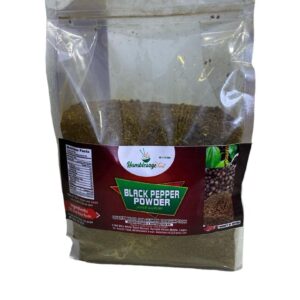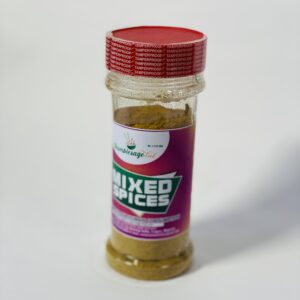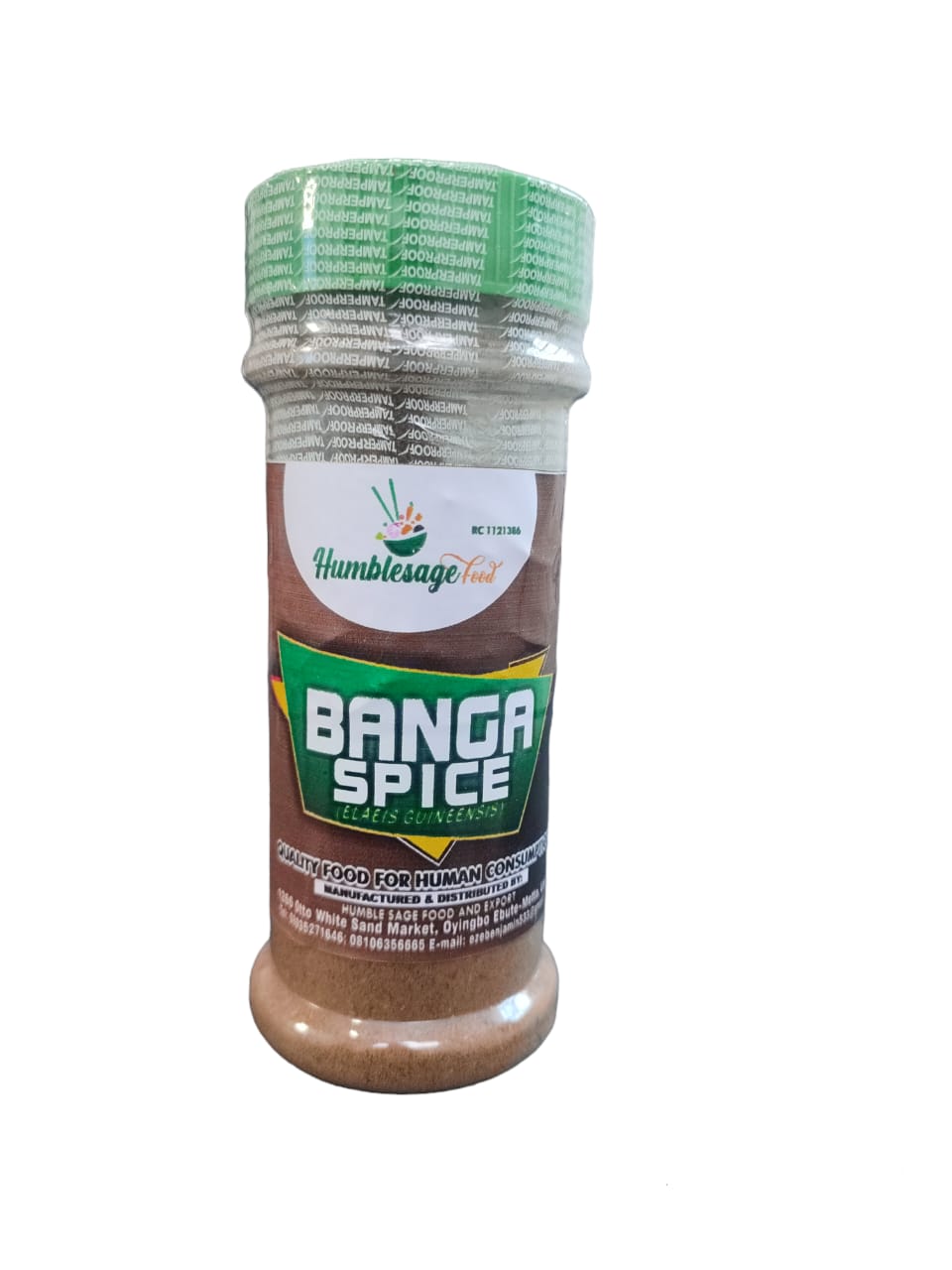

Banga spice
₦5,000.00 – ₦25,000.00Price range: ₦5,000.00 through ₦25,000.00
Banga spice is a traditional West African blend used in Banga soup, made from palm fruit extract. It includes ingredients like Aidan fruit, Oburunbebe stick, Uda seeds, and nutmeg, offering a warm, spicy, and slightly sweet flavor. Rich in antioxidants and anti-inflammatory properties, Banga spice enhances soups, stews, and marinades. Store in an airtight container for lasting freshness.
Description
Banga spice is a traditional blend of spices used primarily in West African cuisine, particularly for preparing Banga soup, a popular dish made from palm fruit extract. This spice blend is rich in flavor and aroma, contributing significantly to the unique taste of the soup. It consists of various indigenous spices and seasonings, each adding its distinct essence to the mix.
Composition of Banga Spice
Banga spice typically includes a combination of the following spices and seasonings:
- Aidan Fruit (Tetrapleura tetraptera): Known locally as “Uyayak” or “Prekese,” it has a slightly sweet and fragrant aroma.
- Beletete (Lagos Spinach or Wild Lettuce): Used for its subtle bitterness.
- Oburunbebe Stick: Adds a distinctive flavor and is an essential ingredient in traditional Banga spice.
- Ataiko Seeds: Small, aromatic seeds that contribute to the overall flavor.
- Irugege Seeds: Another type of aromatic seed, often used alongside ataiko seeds.
- Uda Seeds (Negro Pepper): These seeds add a spicy, peppery flavor to the blend.
- Thyme: Adds a mild earthy flavor and aroma.
- Nutmeg: Offers a warm, slightly sweet flavor.
- Ogiri Okpei (Fermented Oilseed Paste): Adds depth and umami to the spice mix.
Physical Characteristics
- Color: The ground spice mix is usually a brownish powder, varying slightly depending on the specific composition.
- Texture: Fine to coarse powder, depending on how it is ground.
- Aroma: Rich, earthy, and aromatic with a complex blend of spicy, sweet, and savory notes.
- Flavor: Warm, spicy, slightly sweet, and savory with a hint of bitterness.
Nutritional Profile
While the exact nutritional content can vary based on the specific blend of spices used, Banga spice generally provides the following:
- Calories: Low in calories per serving.
- Carbohydrates: Contains a small amount of carbohydrates.
- Protein: Minimal protein content.
- Fat: Generally low in fat, although certain seeds may contribute small amounts of healthy fats.
- Fiber: Some fiber content from the plant-based ingredients.
- Vitamins and Minerals: Rich in antioxidants, vitamins, and minerals depending on the specific spices used.
Health Benefits
- Antioxidant Properties: Many of the spices used are rich in antioxidants, which help protect the body from oxidative stress.
- Anti-inflammatory: Contains spices with anti-inflammatory properties, which can help reduce inflammation in the body.
- Digestive Health: Some ingredients aid in digestion and help alleviate gastrointestinal issues.
- Antimicrobial: Certain spices have antimicrobial properties that can help in fighting off infections.
- Nutrient-Rich: Provides essential vitamins and minerals, contributing to overall health and well-being.
Culinary Uses
- Banga Soup: The primary use of Banga spice is in preparing Banga soup, a rich and flavorful West African soup made from palm nut fruit extract. The spice mix is added to enhance the soup’s taste and aroma.
- Stews and Sauces: Can be used to season other traditional stews and sauces, imparting a distinctive flavor.
- Marinades: Used in marinades for meat, fish, and poultry to add depth of flavor.
Traditional Recipes
- Banga Soup: Made with palm nut fruit extract, assorted meats or fish, and Banga spice. It is often served with starches like fufu, eba, or pounded yam.
- Banga Rice: Similar to jollof rice but cooked with Banga soup base, giving it a unique taste.
Preparation of Banga Spice
- Sourcing Ingredients: Collect all the required spices and seasonings.
- Drying: Ensure all ingredients are properly dried to prevent moisture content.
- Grinding: Grind the dried spices into a fine or coarse powder, depending on preference.
- Blending: Mix the ground spices thoroughly to create a uniform blend.
- Storage: Store the spice blend in an airtight container to maintain freshness and potency.
Storage
- Conditions: Store in a cool, dry place away from direct sunlight.
- Shelf Life: Can last for several months if stored properly in an airtight container.
Cultural and Historical Significance
- Culinary Tradition: An essential component of West African culinary tradition, particularly in Nigerian cuisine.
- Cultural Celebrations: Often used in preparing special dishes for festivals, celebrations, and traditional ceremonies.
Safety and Precautions
- Allergies: Individuals with specific spice allergies should check the ingredients carefully.
- Storage: Proper storage is crucial to prevent the spices from losing their flavor and potency
Additional information
| Weight | N/A |
|---|---|
| Package Size | 200g, 500g, 1kg, 2kg |
Related products
-
Sale!

banga stick
₦5,000.00Original price was: ₦5,000.00.₦4,000.00Current price is: ₦4,000.00. Select options This product has multiple variants. The options may be chosen on the product page -
Sale!

Dried Uda
₦5,000.00Original price was: ₦5,000.00.₦4,000.00Current price is: ₦4,000.00. Select options This product has multiple variants. The options may be chosen on the product page -
Sale!

Black Pepper Powder
₦2,500.00 – ₦50,000.00Price range: ₦2,500.00 through ₦50,000.00 Select options This product has multiple variants. The options may be chosen on the product page -
Sale!

Mixed Spices
₦4,000.00Original price was: ₦4,000.00.₦3,000.00Current price is: ₦3,000.00. Select options This product has multiple variants. The options may be chosen on the product page

